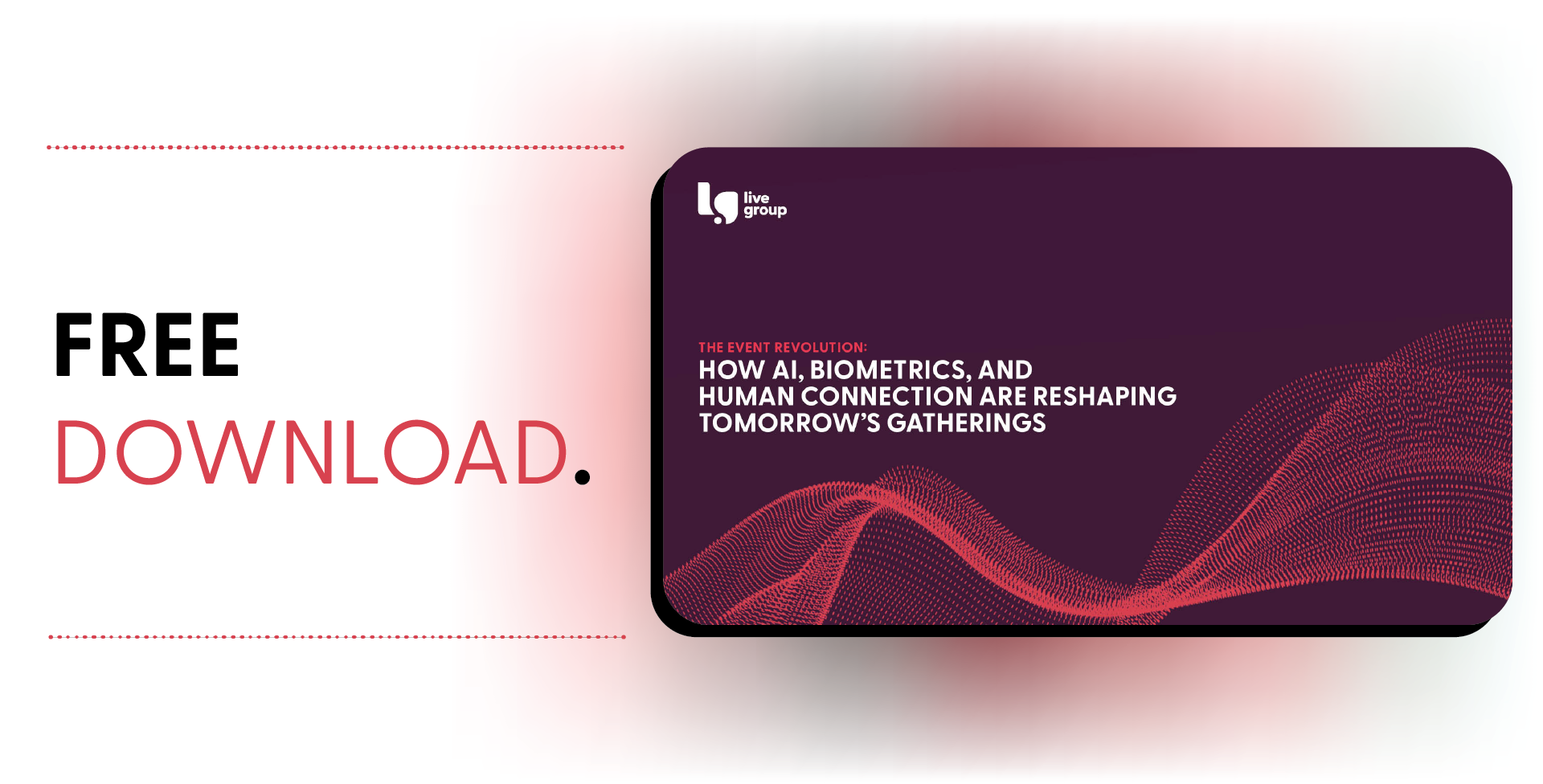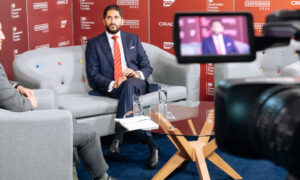Planning out an event communications timeline helps ensure nothing falls through the cracks. A clear communication plan aligns your team and your audience for success.
What Is an Event Communication Plan (and Why It Matters)
An event communication plan is a blueprint for how you’ll share information about your event with all stakeholders, both internally and externally, before, during, and after the event. It ensures that the right messages reach the right people at the right time, whether that’s your attendees, sponsors, partners, or your own team. In practice, this plan keeps everyone on the same page and prevents costly mix-ups.
Without clear, consistent messaging throughout the event lifecycle, you risk confusion, low turnout, missed deadlines, or other costly mishaps. A structured communications plan solves for both internal alignment and external clarity, bridging gaps between departments and audiences. In short, it acts as a single coordinated voice that keeps your event on track and on message from start to finish.
Step 1: Define Clear Objectives and Goals
Start by pinpointing what you need your communications to achieve. Ask yourself what a “successful event” looks like and how communication will support that. Are you trying to drive ticket sales? Educate your internal team? Boost engagement on the day? Defining tangible goals will focus your plan and give you something to measure against later. Some examples of good event communication objectives include:
- Increase brand awareness or industry visibility. For example, use the event to get your company in front of a new audience or market segment.
- Generate leads or sales opportunities. Perhaps the goal is to collect contact information from prospects or convert attendees into customers.
- Foster community engagement and networking. You might aim to create an interactive experience that connects attendees with each other and with your brand.
- Secure stakeholder buy-in or media coverage. For instance, attract press attention or new partnerships as a result of the event’s messaging.
Be as specific as possible. A clear goal (e.g. “achieve 500 registrations and 90% attendance” or “generate 50 qualified sales leads”) will guide your communication strategy and messaging. These objectives should align with broader business goals and will later help in evaluating the plan’s success.

Step 2: Identify Your Audiences and Stakeholders
Next, map out who you need to communicate with, both externally and internally. An event usually has multiple stakeholder groups, each with different information needs. Common groups include your prospective attendees or customers, sponsors and partners, speakers or special guests, the media or public, and your internal team (management, staff, and other departments involved). For each group, consider what they care about and what messages they’ll need. For example, an attendee will need logistical details (date, venue, schedule), whilst a sponsor will need to know deliverables and deadlines for their involvement.
Event Attendees: Event agenda, how to register or RSVP, venue or login details, and timely updates on any changes.
- Speakers or Presenters: Guidance on their roles, session schedules, technical setup (A/V instructions), deadlines for bios or slides, and rehearsal details.
- Sponsors and Partners: Key dates and deadlines (for deliverables, payments, etc.), clear information on their entitlements (booth info, branding placements), and any promotional expectations.
- Internal Staff and Team Members: A clear run-of-show schedule, staffing assignments, and briefing on roles so everyone inside the organisation knows what’s happening and when.
- Executives and Stakeholders: High-level progress updates, key talking points or media preparation (especially if they will address the audience or press).
By segmenting your audience like this, you can tailor your communication to be relevant and engaging for each group. It also ensures no important stakeholder is left in the dark. You might even prioritise stakeholders using a simple mapping exercise, for instance, identifying which groups have high influence or interest in the event so you can manage them closely (versus those who just need basic updates). The goal is to speak to each audience’s needs. A one-size-fits-all message won’t work if, say, your sales team needs different info than your attendees. Take the time to list out everyone who needs information about the event and what each of them requires.
Report 2025
Download the 2025 Report
Step 3: Craft Key Messages and Story
With goals and audiences in mind, develop the core messages for your event. This is the foundation of all your communications, ensuring consistency across channels. Start with the big ideas: What is the story or theme of your event? What value does it offer to attendees? Your messaging should highlight the benefits to the audience rather than just the features of the event. For example, instead of “We have three keynote speakers and two networking sessions,” frame it as “Learn from industry leaders and make valuable connections through keynotes and networking sessions.”
It often helps to write down a few basic components of your message strategy:
- Tagline or Theme: a short, memorable phrase that captures the essence of the event (for internal use and possibly marketing slogans).
- Value Proposition: a brief description of what the event is about and why someone should care, focusing on attendee benefits (e.g. solving a problem, learning a skill, enjoying an experience).
- Key Details: the must-know facts like the date, time, location or platform, and how to register. Even internal audiences need these basics clearly stated.
- Call-to-Action (CTA): what you want the audience to do next, for example “Register now,” “Save the date,” or for internal teams perhaps “Confirm your department’s participation by X date.”
Keep the tone professional but audience-focused. Research shows that customer-centric messages perform better than ones that are overly self-promotional. This means emphasising how the event meets their needs or interests (learning opportunities, networking, fun experience, etc.) rather than just talking about your company. Ensure the core messaging is agreed upon early and shared with everyone on your team so that all communications, from the event website to a sales rep’s phone invite, are speaking in one coordinated voice.
Step 4: Choose Your Communication Channels
Now determine how and where each message will reach its audience. A good event comms plan uses a mix of channels to cover both external marketing and internal updates. Here are some channels to consider:
- Website or Landing Page: Create a dedicated event page with all key information and a registration link. This serves as a central reference for attendees and can be used by internal teams to get details right.
- Email Campaigns: Email is a workhorse for event comms. Use it to send invitations, confirmations, reminders, and post-event follow-ups. Segment your mailing lists if needed (e.g. one list for customers, another for partners, another for internal staff updates).
- Social Media: Leverage platforms like LinkedIn, X (Twitter), Facebook, or Instagram to promote the event and share updates or teasers. This can amplify your reach and build excitement with engaging content (countdowns, speaker announcements, behind-the-scenes clips).
- Internal Channels: Don’t forget in-house communication tools for your team and stakeholders. This could be an internal newsletter, updates on your intranet, Slack or Microsoft Teams messages, or regular briefing meetings. For example, you might post an announcement on the company intranet so all employees know about the event (especially important if their support or awareness is needed).
- Print and Traditional Media: Depending on your audience, you might use printed flyers, direct mail invitations, or even press releases and media coverage. For a local B2C event, posters or local news can be effective; for a B2B conference, an industry press release might attract attention.
- SMS and Event Apps: For time-sensitive updates (like last-minute changes or during-event announcements), consider text messaging or push notifications via an event app. For instance, an SMS reminder on the morning of the event can ensure attendees (or staff) don’t miss important updates.
Choose channels that best reach your intended audience and fit the message. Often, multiple channels will work together, for example, you might announce the event on social media to generate buzz, whilst also sending formal email invites to a targeted list. Ensure internal audiences get information via their normal work channels (staff email, team meetings) so they stay in sync with what external audiences are hearing. Finally, keep messaging consistent across channels: the style can differ (a tweet will be shorter and more playful than a formal email) but the core info and tone should align. A coordinated multichannel approach increases the chances your message is seen and understood.
Step 5: Assign Roles and Responsibilities Early
A communication plan is only as good as its execution, so clarify who is responsible for each task. Identify owners for major communication areas before the event promotions kick off. For instance, decide who will write and send email updates, who will manage social media posts, who will handle internal announcements, and who will coordinate with speakers or sponsors. If you have multiple teams (marketing, PR, operations, internal comms), establishing clear ownership prevents overlaps or gaps.
It’s crucial to sequence efforts in the right order, internal misalignment can cause external miscommunication. For example, if your marketing team starts sending out promotional emails before the content team or speakers have finalised session details, you could confuse your audience. To avoid this, make sure everyone knows the timeline (see next step) and their part in it. Have a kickoff meeting to brief all internal stakeholders on the communication plan. This internal briefing should cover key messages, the schedule of communications, and protocols for handling inquiries. By defining roles (e.g. “Sarah will update the website, John will liaise with the press, Aisha will brief our internal sales team”), you ensure accountability. As one guide notes, clear ownership of each communication strand keeps things running in sequence and prevents important tasks from falling through the cracks.
Also consider stakeholder management here: if certain internal leaders or departments need to be looped in (for approvals or awareness), assign someone to keep them informed. For example, task your internal communications lead with updating executives on registration numbers and key announcements, so they are never caught off guard. In short, coordination is key, get your team aligned on who does what, before the messaging starts flowing.
Step 6: Plan the Timeline for Before, During, and After
With objectives, audience, messages, channels, and owners in place, chart out a communication timeline. This timeline maps what will be communicated, on which channel, and when. It should span from the earliest announcement right through to post-event follow-ups. A structured schedule ensures you maximise impact at each stage and don’t overload (or neglect) your audience at the wrong times. Here’s an example timeline framework:
- Early Preparations (Months Before): Kick off communications well in advance for larger events. Send initial “Save the Date” announcements or invitations a few months out. This is also the time to brief internal stakeholders, for instance, inform your sales or account teams about the event so they can mention it to clients.
- Build-Up (Weeks Leading Up): In the several weeks before the event, ramp up the messaging. Promote key highlights such as early-bird registration deadlines, featured speakers, or agenda sneak peeks to build excitement. You might roll these out in phases, e.g. one month out, announce the keynote speaker; two weeks out, share a preview of the schedule or a video message from the host. During this period, also send logistics information to registered attendees: things like how to get to the venue, how to use the event app, or what to prepare. Internally, make sure all departments are updated on attendee numbers and any changes.
- Final Countdown (Days Before): In the last few days, send final instructions and reminders. This could include an email to all attendees with essential “know before you go” details (venue maps, parking info, or for virtual events, login instructions) and a reminder of the start time. Use multiple channels for critical updates, for example, an SMS reminder the day before and a social media countdown post. If the event is large, consider also having an internal team checklist meeting at this point, to run through the run-of-show and ensure everyone internally is ready.
- During the Event (Live Communications): Just because the event has started doesn’t mean communication stops. In fact, real-time communications are vital. Have mechanisms to provide live updates: for example, live-tweet or post updates on LinkedIn about sessions as they happen. Use push notifications or texts to alert attendees of any on-site changes (“Room change for Panel B to Hall 2”) or to highlight what’s happening (“Keynote starting in 10 minutes at Main Stage”). Internally, keep a back channel (like a staff WhatsApp/Slack group or radio line) so the team can coordinate on any on-the-fly issues. Good communication on the day ensures a smooth experience and quick response to any hiccups.
- Immediate Post-Event: Don’t go silent when the event ends, this is the moment to capitalise on the momentum. Within 24-48 hours, send a thank-you message to attendees, ideally personalised if possible. Provide any promised follow-up, such as links to presentation slides or recorded sessions, and include a brief recap of highlights. This message is also a great place to include a feedback survey, ask attendees about their experience whilst it’s fresh, to gather testimonials and areas for improvement. Meanwhile, on social media, share post-event content like photo galleries or a highlight reel video to show what happened and keep the buzz going. For any VIP stakeholders (e.g. major clients or sponsors), consider a personal follow-up note thanking them for their contribution.
- Longer-Term Follow-Up (Days to Weeks After): In the weeks following, continue nurturing the relationships built. Send a summary report or an email newsletter highlighting key outcomes (number of attendees, major announcements, quotes from speakers) to demonstrate the event’s impact. If this is a recurring event, you might even drop teasers for the next event to keep people engaged. Internally, schedule a debrief meeting with your team soon after the event. Discuss what went well, any communication hiccups, and gather suggestions for next time. This internal review ensures you capture lessons learned whilst they’re still fresh, and it helps improve future event plans.
Spreading communications across a timeline like this prevents information overload and keeps your audience engaged at each stage. It also ensures your internal team isn’t scrambling last-minute, they’ll know ahead of time what needs to happen when. Use a calendar or Gantt chart to plot all the communications. Share this timeline with all internal stakeholders so everyone knows the schedule. With a clear timeline, no key message gets missed, and you maintain a steady drumbeat of interest from pre-event buzz to post-event follow-up.
Step 7: Prepare for Live Event Day and Contingencies
Even the best-laid plans can face surprises on event day. A truly effective communication plan includes a contingency strategy for handling the unexpected. Start by pre-writing and pre-approving some messages for common scenarios. For example, draft templates for announcements like “We’re experiencing a 30-minute delay for the next session” or “Room change: the workshop will now be in Conference Room B.” This way, if such issues occur, you can quickly deploy a polished message via email, text, or an announcement in the event app. Top event teams queue up these day-of messages before the doors open, so attendees aren’t left in the dark during a hiccup.
In addition, have a crisis communication plan. Brainstorm potential problems (a key speaker might cancel last-minute, a technical system could fail, extreme weather might impact travel, etc.) and decide in advance how you’ll communicate in each case. For each scenario, determine the chain of communication: who internally must be alerted first, and how you will inform attendees or other stakeholders. For instance, if a speaker cancels, you might notify your event MC and AV team internally, then immediately send an update to attendees about the agenda change along with the replacement speaker info. It’s wise to designate a point person for crisis comms on the day of the event, who will approve and send urgent announcements so that messaging stays controlled and consistent.
Remember to be transparent and timely if issues arise. It’s better to acknowledge a problem and tell people how you’re addressing it than to stay silent and let confusion spread. Use all channels necessary to reach attendees with critical updates (e.g. a push notification plus an announcement on stage for an in-person event). Internally, keep your team in the loop simultaneously, if plans B or C are activated, make sure staff and volunteers know what to do and say. By planning for contingencies, you’ll be able to react calmly and keep the event on track, earning trust from your audience that you’re on top of things even under pressure.
Step 8: Follow Up and Measure Your Success
Communications don’t end when the event does, in fact, the post-event phase is where you prove that your plan worked. First, execute the follow-up communications as planned: send those thank-you notes, share on-demand content, and gather feedback through surveys. These actions reinforce your event’s value and keep your brand in attendees’ minds. For external audiences, a friendly follow-up that recaps key takeaways or provides useful content (like an eBook of insights from the event) can turn a one-time attendee into a long-term lead. For internal audiences, celebrate the event’s success, for example, share a summary of achievements (attendance numbers, social media impressions, revenue generated, etc.) with your team or company leadership to recognise everyone’s efforts.
Equally important is to measure the results of your communication plan. Revisit the objectives you set in Step 1 and ask: did our communications help achieve these goals? Track quantitative metrics wherever possible. Some metrics to consider include:
- Email performance: open rates and click-through rates on your invitation and reminder emails (to gauge how compelling your messaging was).
- Registration and attendance: the number of sign-ups, and what percentage actually attended, and which communication or channel drove the most sign-ups (e.g. did most people register after the email campaign, or via social media links?).
- Engagement metrics: social media engagement (likes, shares, hashtag mentions), event app engagement (poll responses, Q&A participation), and on-site feedback from attendees. If you ran ads or promotions, what was the response rate?
- Internal feedback: input from your team on how well the internal comms flowed. Were staff adequately informed of updates? Did any internal communication breakdowns occur?
Qualitative feedback is also valuable. Review survey responses and note any comments about communication, did attendees feel well-informed? Was any information missing or sent too late? If you briefed stakeholders internally, ask them if they felt prepared. All these data points will highlight what worked and what didn’t. For example, you might find that your email reminders had high engagement, but social posts got little traction, indicating you should focus more on email next time, or try a different approach on social. Or perhaps attendees loved the event but several mention they didn’t know about a particular feature on-site, meaning that info wasn’t communicated clearly enough beforehand.
Finally, hold an internal debrief meeting (as mentioned in the timeline) to discuss these findings openly. A communications debrief should cover: Did we hit our targets? Were our messages on point? Were the timing and channels effective? Capture any lessons learned. Maybe you’ll note to start promotion earlier, or to involve the internal comms team more closely next time, whatever it is, document it. This continuous improvement approach will make your next event communication plan even stronger. In essence, measuring success isn’t just about proving ROI; it’s about refining your communication strategy so each event you run can achieve even greater results.
Conclusion: Putting Your Event Communication Plan Together
Creating an event communication plan might feel like extra work upfront, but it’s the secret to running events that appear effortless to attendees. By defining your objectives, knowing your audiences, and charting out messaging across channels and timelines, you ensure that everyone, from your CEO to the last attendee, knows exactly what’s happening and why. A good plan covers internal and external communications in tandem, so that your team is coordinated behind the scenes whilst your audience receives a consistent, engaging message. When done right, your event communications strategy becomes a reliable blueprint that guides all outreach with one coordinated voice towards your event goals.
Now it’s time to put these steps into practice. Gather your team, outline your plan, and remember that communication is an ongoing process. Keep it clear, timely, and audience-focused. With a solid communication plan in place, you’ll not only execute a smoother event, but also create a more meaningful experience that actually works for everyone involved, before, during, and long after the big day.
Download the 2025 Report & learn how to perfect your event communication plan

Ready to take the stress out of event planning?
Chat to us today about how our delegate management services can help bring your next event to life – on time, on budget, and beyond expectations. Whether you need full-scale delivery or targeted support, Live Group is here to help.





